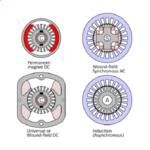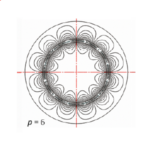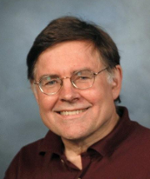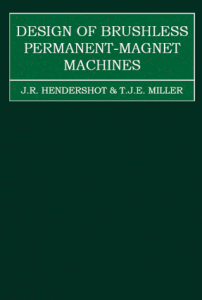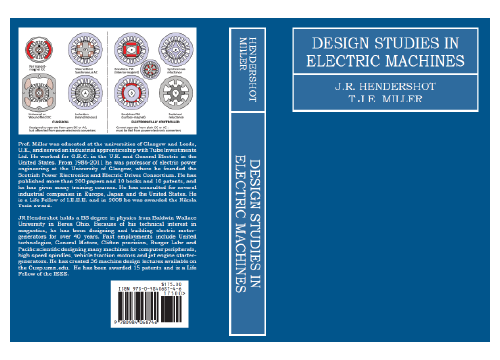In Finite Elements in Electrical and Magnetic Field Problems, edited by M.V.K. Chari and P.P. Silvester, (Wiley, 1980, ISBN 0 471 27578 6), A.L. Frisiani, G. Molinari and A. Viviani in the Introduction wrote,
1970! If that is true, it must be time to celebrate the 50th anniversary of the finite-element method in electrical and magnetic field problems. 2020 is a nice round number, and we’re at the start of a new imperial era in Japan, so why not, at the very least, raise a glass and toast the pioneers of a technique which has revolutionised our ability to solve problems in electromagnetics?
Of course the finite-element method did not arise suddenly, and there were many contributors not just in electromagnetics but in other fields as well, as there still are today.
For me personally the passage of 50 years is a milestone. I graduated in 1970 and went to work trying to solve a 3D eddy-current problem that was far beyond my capabilities, even though 3D problems were under investigation at the time by finite-element, finite-difference, boundary-element, Green’s function, and other methods; [see Okuda H., Kawamura T., and Nishi M., No load magnetic field analysis in the end region of a turbine generator by the method of finite elements, I.E.E.E. Power Engineering Society, Winter Meeting, New York, Paper A 76 230−3, 1976]. I’m afraid I ended up building a scale model and making measurements. Today, a graduate engineer would be able to tackle this class of problem with confidence, using a tool such as JMAG.
Nearly a decade after graduating I went to Schenectady N.Y. to the General Electric R&D Center. It was January. I had checked the latitude of Schenectady in the atlas. It was on the same level as Spain, so I did not think it necessary to take warm clothes. What a shock I had, to arrive in temperatures of -20℃. At the end of my first day, it was starting to snow, and a kind colleague offered to give me a lift back to my lodging in the town. That colleague was M.V.K. Chari.
Chari had a sense of humour. It’s just as well. As we left the G.E. parking lot, waiting in the dark at a traffic light, an enormous articulated tractor-trailer swung out into the road, heading in our direction. Chari was certain we were about to be crushed to death. I seem to remember he expressed this certainty in a very short statement, maybe only one word, although I cannot remember exactly what it was. The suspense did not last long. The truck slithered away in the snow as quickly as it had appeared, and Chari let out a huge peal of laughter. Of course it was relief, but I also think he was laughing at his own sense of calm being confronted with an insoluble problem — that of surviving the encounter with the truck. Get through that, and any finite-element problem would be easy!
Chari was the originator of a company finite-element program, which ultimately spawned a few famous names in the finite-element business; Silvester was a collaborator, already well known, but there were many others and the lab. was frequently visited by leading figures in the field. One of them I remember was Konrad Reichert. At the time there was much interest in extending the finite-element formulation to include permanent magnets, and much discussion about the relative merits (and even the essential equivalence) of finite-element and finite-difference methods. Convergence was topical. At that time I’m sure no-one could have imagined the routine solution of problems involving 10 million elements, which is not uncommon today. But there was a day-to-day activity in which several ordinary engineers used the method to solve electromagnetic problems.
There was no GUI. Cards and paper tape were used. One had to prepare an ASCII file of node coordinates, and a list of elements associated with the nodes. That was the state of “pre-processing”. It worked. And while it was time-consuming, it solved problems that could not be solved any other way. This kind of activity was going on in many companies at that time, many of them large firms who had their own calculating departments.
From the start, it seemed that the finite-element community wanted to solve the whole machine. It was anathema to try to use it to calculate some obscure detail in an equivalent-circuit model, such as slot-leakage inductance. Who needs that, when we can solve the entire machine using the finite-element method? Little by little, however, standard methods developed for refining those equivalent-circuit parameters using finite elements, and these methods continue to be used and developed today. But of course many other calculations became possible, which were far beyond the capabilities of equivalent circuits. A good example is the calculation of eddy-currents, which is inherently a distributed-field problem that cannot be squeezed into the ‘bottle’ of an equivalent circuit or even a sophisticated circuit-simulation program.
There was a lot of ignorance too. I once heard an academic say that you could write a finite-element program in one afternoon. And another, who said that you could design a synchronous machine with 160 lines of Fortran. Gee! Clever people!
Times have changed. But we are still in touch with the pioneering times, and although we have lost some of the individual contributors it does seem worthwhile to remember them. I often think of them, and how lucky I have been to rub shoulders with them. Much laughter is remembered as well. Please join me in paying tribute, and of course include your own mentors and forebears.

